Is Fly-Fishing a Cult?
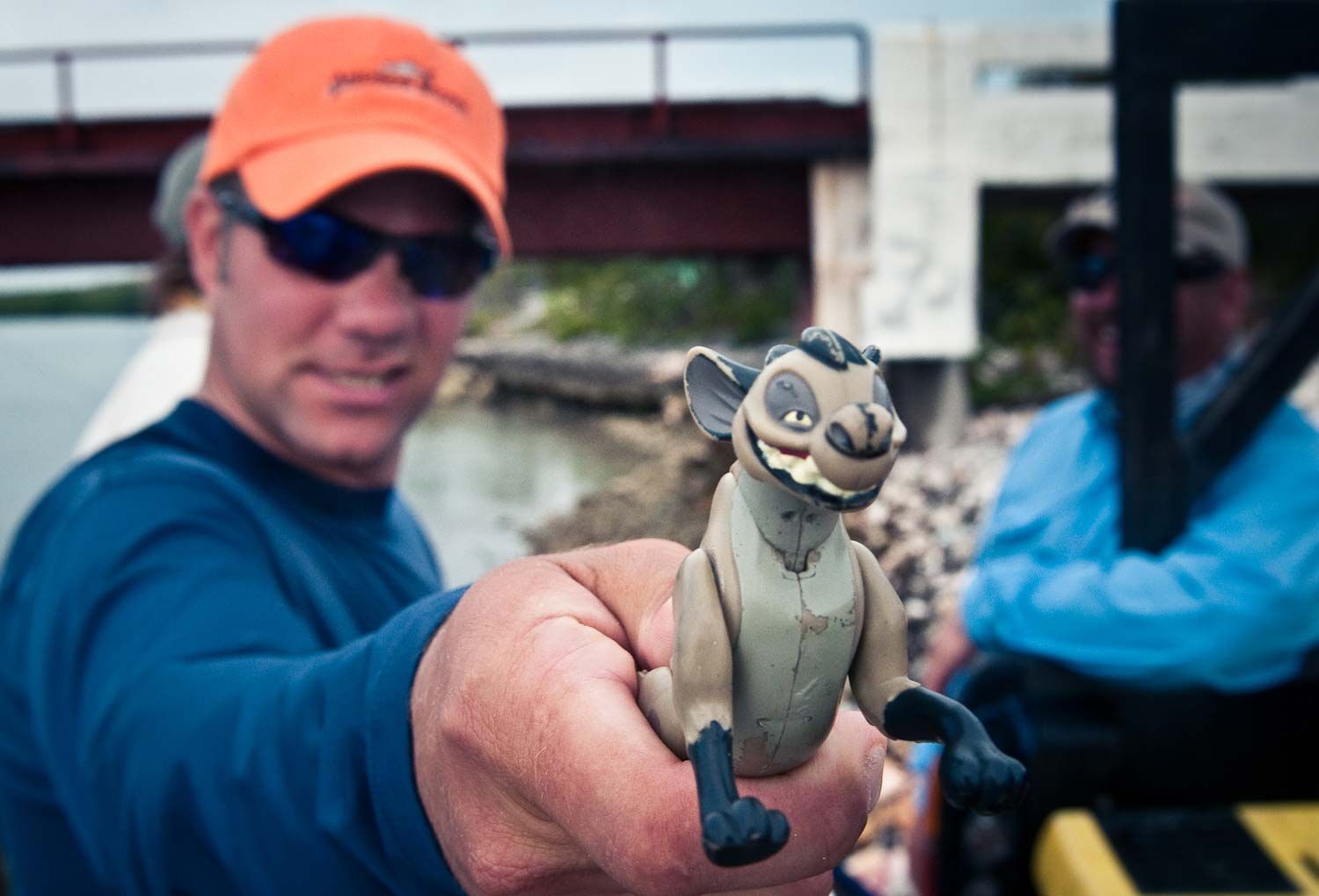
I’m starting to wonder if I have joined a cult.
I picked up a copy of “The Mission” magazine at IFTD. It’s a nice looking book. Good printing, nicely bound, free, everything I like in a magazine. I’ll be honest, I haven’t read it past the cover but that’s what got my attention. The subtitle of the book is “The Cult of Fly Fishing.”
I was intrigued by that. I instinctively felt like that was a fair assessment. As I flipped through the pages I noticed the grandiose way the images portrayed anglers and their quarry. It did look suspicious. In a lot of ways fly fishers act kind of cultish, and the deeper you get into it the more cultish it becomes. I think I may have fallen into this, and even contributed to it.
Let’s be honest, we are an odd lot. There is an awful lot of dogma surrounding fly fishing that has very little to do with catching fish. I tried a test. When I found myself in a group of avid fly anglers, I tried listening to the conversation as if I were an outsider, knowing nothing about the subject. I determined that we sound bat shit crazy to the uninitiated.
I became concerned, so I did a google search for “Identifying a cult.” I found this check list.
6 tips for spotting a cult.
Pressure
There is always some kind of pressure to join. This often involves the idea that your belief system in invalid and that you are missing out on some kind of enlightenment or deeper spiritual experience. “CHECK.”
Brainwashing
Once recruited, members are subject to an organized program of thought reform, or what most people refer to as brainwashing. “CHECK.”
Divine Leaders
Cults usually have charismatic leaders who proclaim themselves as having special powers or special insight. And, of course, divinity. “DOUBLE CHECK.”
Read More »Alice’s Angle: November
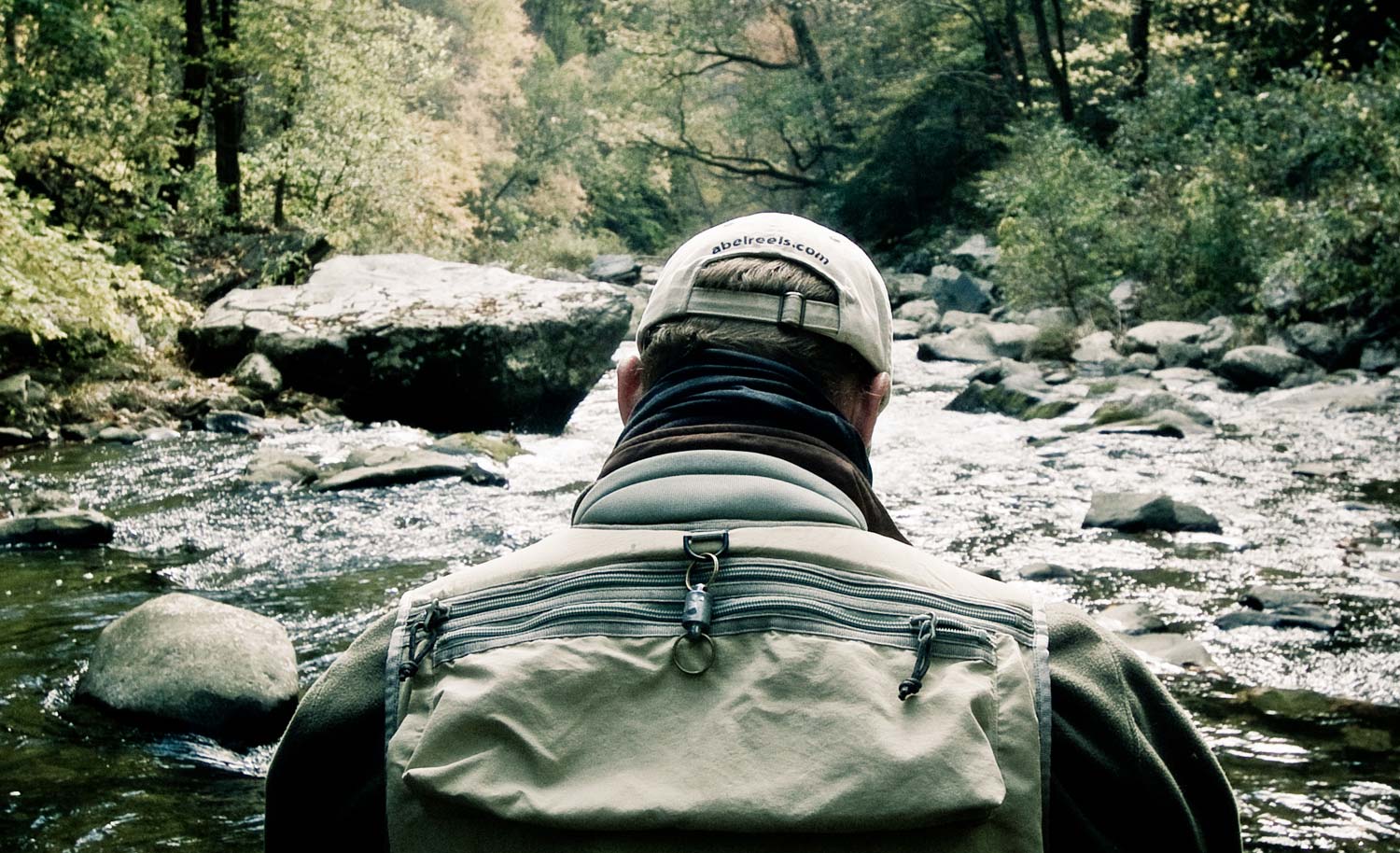
By:Alice Tesar
A couple of tips for successful fishing in November.
A frequent customer stopped into the fly shop early September announcing that he had been greatly enjoying “Adult Summer.” Adult Summer is more commonly referred to as the nation’s fall season. Children are back in school for 6-8 hours a day and parents, in this man’s case, can have a bit of flexibility over their lunch breaks. So sip your coffee slowly, eat a hearty hash breakfast, drop the kiddos at school, and continue to take advantage of Adult Summer into the winter months.
The most wonderful part of November fishing is that the fish don’t begin eating until later in the morning. I like to get on the water just after the sun has danced across the water. Air temperature should be 45-55 degrees Fahrenheit before you get on the river. Freezing nights push the fish into deep pools and slow water to conserve energy. It’s only as things warm up in the day that they become more active and hungry. Streamers, with various actions stripped through deep pools require a clean presentation but can effectively get the aggressive Brown Trout riled up. Please, avoid harassing them around redds. As for fall mayfly hatches, you should be looking for Blue Winged Olives and Mahogany Duns.
The Mahogany is one of my favorite hatches to fish, if not for its sporadic occurrence then for how the Trout eat them. Trout feast on Mahogany Duns the same way you might approach Thanksgiving Dinner, hungrily but not aggressive or snappy. After all, it is a holiday of gratitude. The slow water of a dry summer causes the Duns to drift long distances, so Trout analyze their eats and don’t snap at every surface twitch. Hit the river an hour
Read More »Bugs, Bugs Everywhere, And Not A Fish To Be Seen

HAVE YOU EVER THROWN A PARTY, SENT OUT THE INVITATIONS, BOUGHT THE ONION DIP, AND IN THE END IT’S JUST YOU AND YOUR ONION DIP?
Now imagine the river is the party, the bugs are the onion dip, and the trout are your ungrateful, good for nothing, no-show friends. If you spend enough time on rivers, you have either seen or will see a situation where the hatch is out in force, yet not a single one of our finned friends is so much as poking a nose up to say hello. It is usually at this point your buddy starts with his blubbering about, “This is crazy man, all these bugs and not fish…I just can’t believe it dude…trout are cruel mistresses…I hate you Dad, ” and other such nonsense. My advice is
Read More »Gender Clarity in Fly Fishing
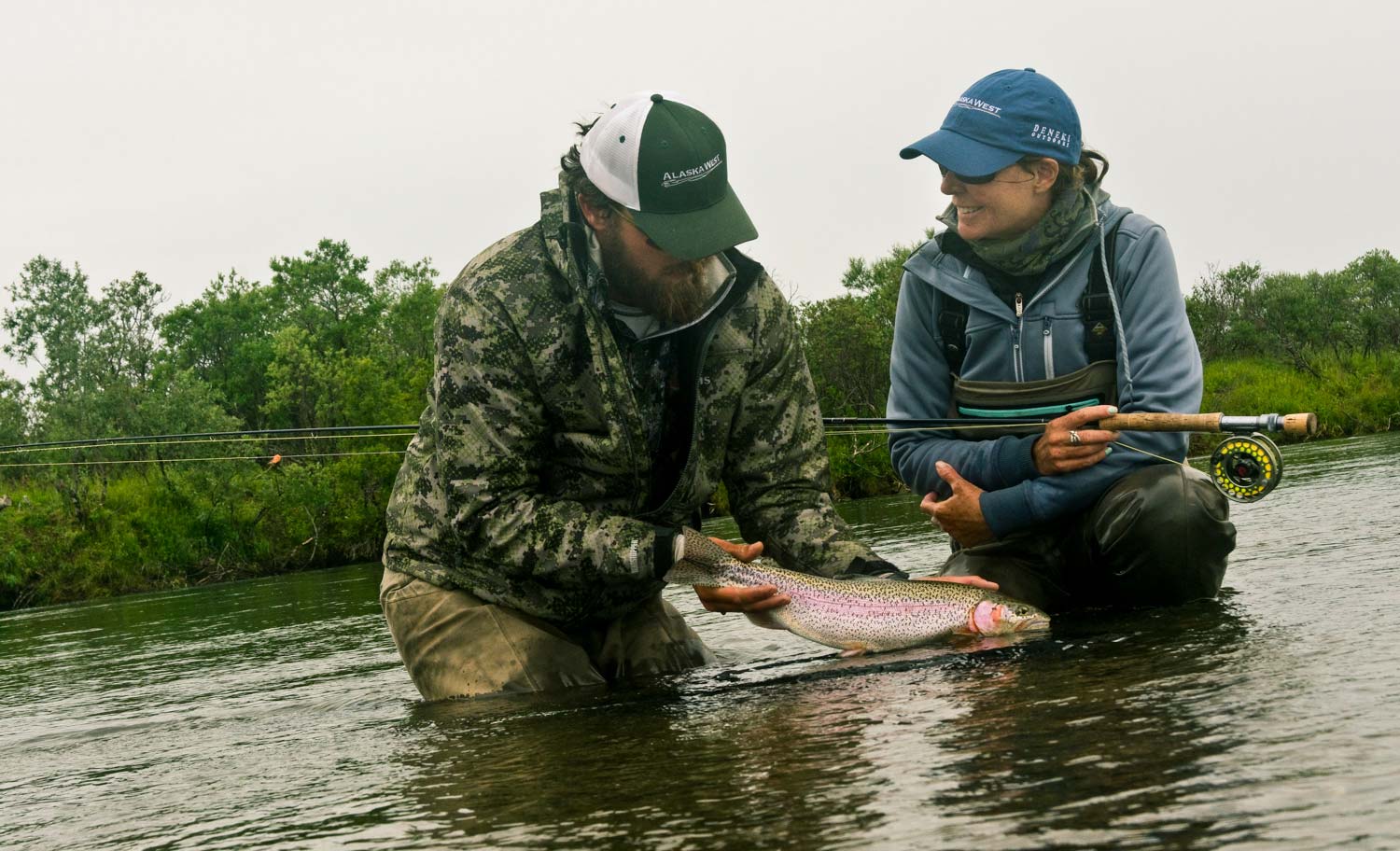
By: Alice Tesar
It’s not a secret that women fly fish. They’ve been fishing for as long as men. If you’re shocked by this, you may need to fish more.
With this said, there are many campaigns and organizations encouraging more women to get into the sport. From increased visibility in fishing publications to women specific gear (not just pink and shrink) companies are pumping more funds into making women feel included in the fishing industry.
One of these campaigns is Orvis 50/50 on the Water: Creating Gender Parity in Fly Fishing. What seems to be Orvis’s primary ad for the campaign is a montage of some baller female anglers with voiceover of a man who hates women. He says things such as, “women should learn that they are not so spectacular.” While part of me wants to strangle this piece of sexist, insecure shit a much stronger part of me just wants to fish. This has always been the stronger voice in my head. I don’t have time for the haters and I think Orvis shouldn’t give them their time either. If you look at comments below the video on YouTube and other message boards, you will see a similar sentiment.
Why does this video feel like a war cry? Why is Orvis stooping to the level of this aggressive man in the video? Why does this commercial vilify men? Vilify anyone? Is Orvis fueling this man’s anger and those that are like him and is that constructive to the larger community?
If Orvis wants us to “lead more fulfilling lives through a deep personal connection to the adventure and wonders of the natural world,” as their mission statement reads, why do I feel like I need to be afraid of this “guy” when I’m on the river now?
As I was sucked into the vortex of comments below the video I stumbled upon a response from Orvis. It was the Orvis messaging I wanted from the beginning of the campaign:
“We did a lot of listening, and many women described barriers to entry that we weren’t fully aware of. Not all such barriers are aggressive or obvious: No one was telling women that they couldn’t fish. Instead we heard about a lack of peer groups, about how intimidating it can be to join a male-dominated community as a novice angler, and about how many women felt they would learn better in an atmosphere where they didn’t feel under scrutiny.”
Read More »4 Tips For High Water Trout Fishing
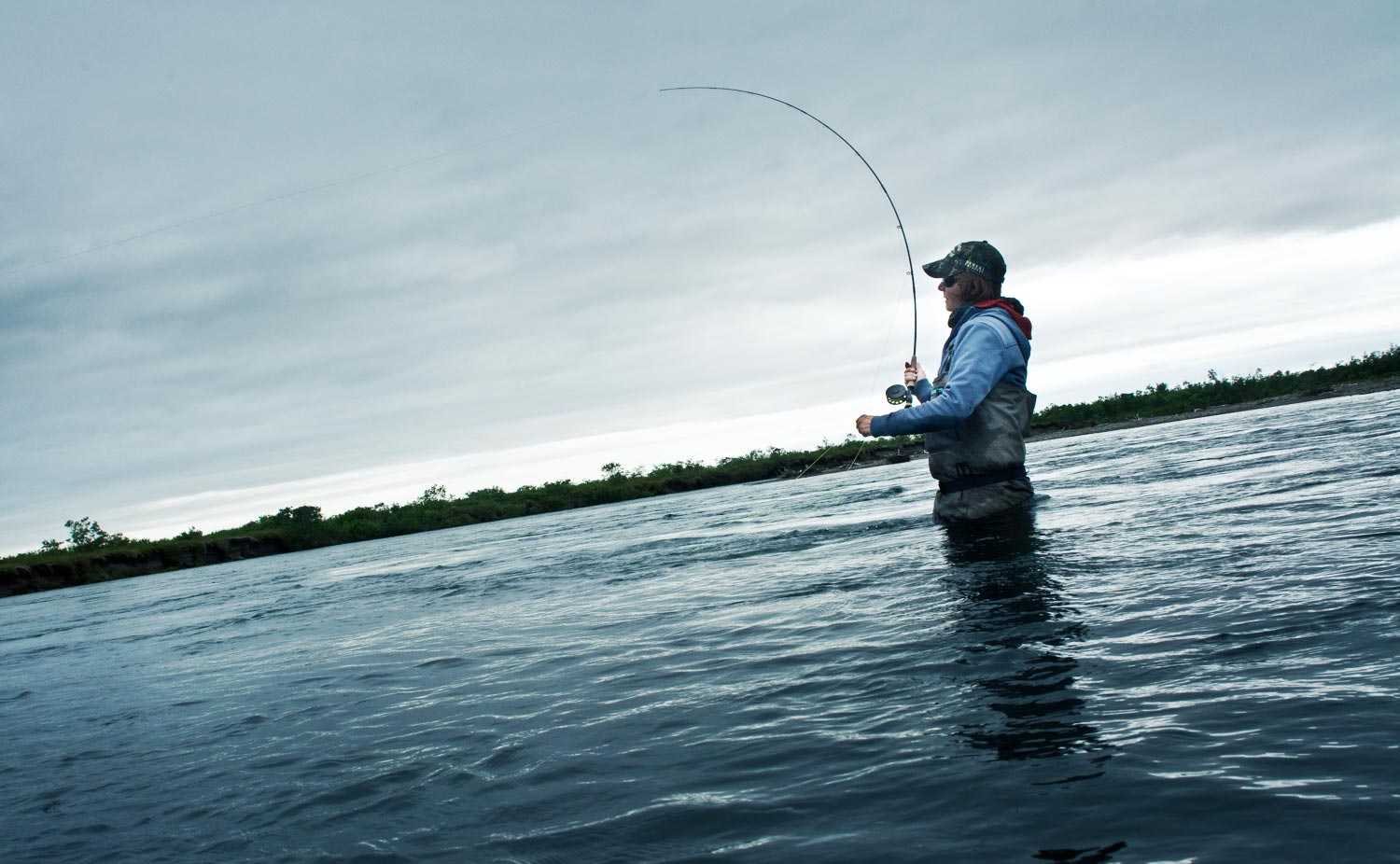
These tips will help you catch fish when the river is up.
Anglers in parts of the west are looking at high water for the foreseeable future. High water can be a fly anglers friend. A swollen river might spoil your dreams of big trout sipping mayflies in the film but if you adapt to the conditions you can still enjoy good fishing and the chance at a real trophy. Here are 4 tips to help you be successful during this season’s high water.
Head upstream
While the lower sections of larger rivers may be pretty stained, you can almost always find fishable conditions further upstream. If visibility is too poor on your larger rivers, it might be time do do some blue lining and check out those headwater streams where conditions are better.
Look for points of refuge
High water forces fish to stack up in places where the current is not so strong. Eddies and inside bends where the water is slower can be very productive. You can sometimes catch a handful of fish out of small pockets you’d walk past at normal flows. Structure becomes even more important in heavy water. Pay extra attention to blowdowns and submerged boulders.
Match the hatch that isn’t
Read More »How To Fish A Mouse Pattern: Video
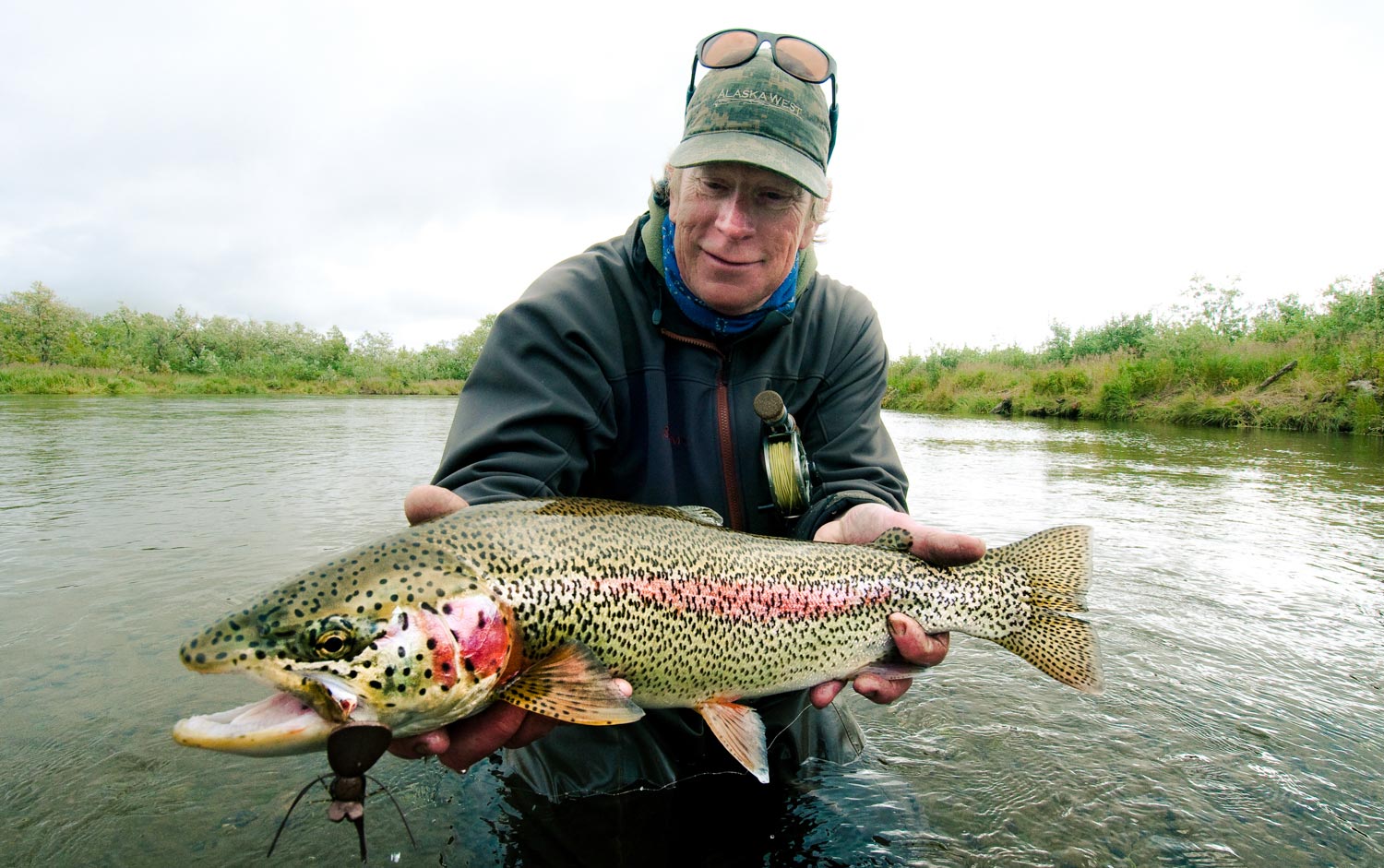
There’s no more exciting way to catch trout than on a mouse pattern.
Mousing is exciting and incredibly visual. The only thing cooler than watching a fish charge your mouse pattern is the explosive eat. It’s a productive way to target big trout, and it works more often than you might think.
Lots of anglers are intimidated by the idea of fishing mouse flies. It’s really not difficult. It just requires that you learn a couple of techniques and have some faith. Give it a try and I’ll bet you’ll be hooked.
WATCH THIS VIDEO AND LEARN TO CATCH TROPHY TROUT ON A MOUSE FLY.
Read More »Deadly Ice Off Duo
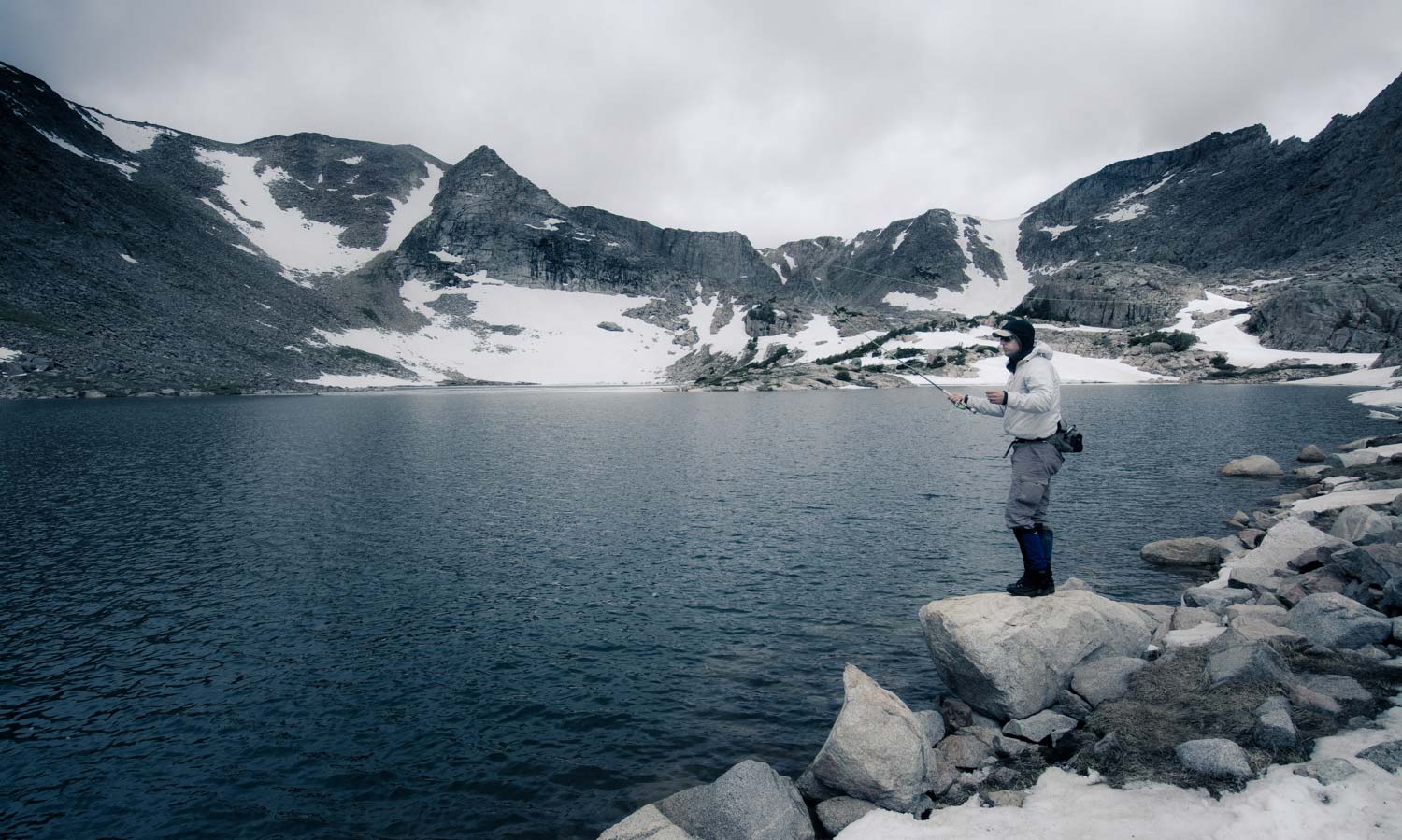
By Bob Reece
Ice off on lakes in the Rocky Mountain region can be dynamic.
It can also be extremely challenging. Tim Drummond’s extensive knowledge of still water scenarios led to his creation of two highly effective still water patterns. These two patterns have a proven track record and can help crack the code to Ice Off success.
Tim has worked professionally as a guide for well over a decade in Northern Colorado. His experience with both moving and still waters has led to a dialed in understanding of these aquatic environments. I’ve known Tim for several years and was able to ask him about his thoughts behind the creation of his Chromie and Water Boatman patterns.
“My Water Boatman was originally tied to imitate the abundant boatman we see here on the Delany Buttes lakes and other stillwaters. The fly is tied with a metallic plastic bead versus a metal bead because I did not want the fly to sink fast, only gradually. Water boatman are divers going from the surface to just below the surface as they move across the water. This fly is best fished on an intermediate line just below the surface with a slow retrieve or hand twist retrieve. I have had the most success with this fly in the spring and fall when boatman are active. Sight casting to a cruising fish is how I have hooked most of my big fish on the boatman. The fly can also
Read More »Cool Shots at Bonefish
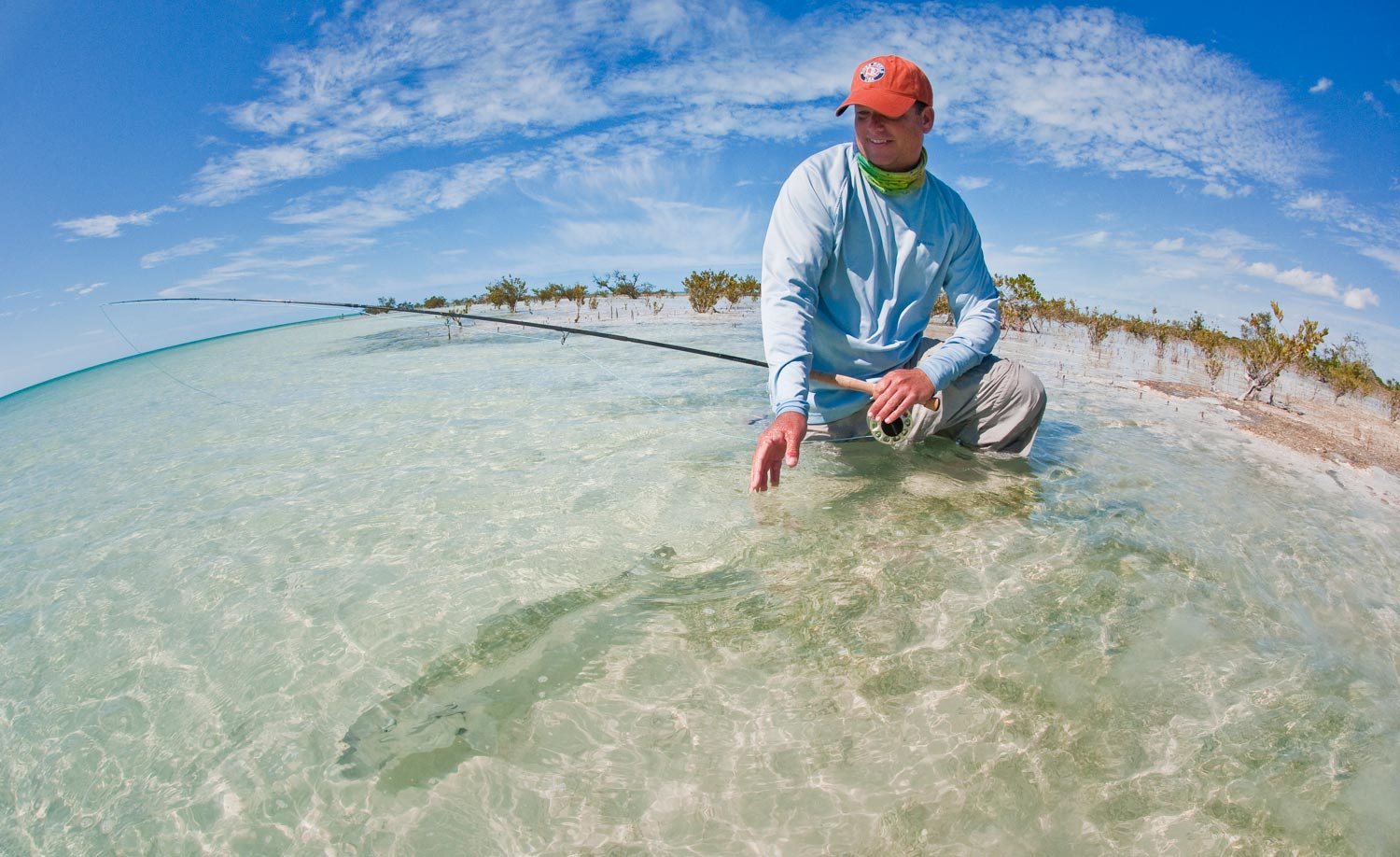
WHAT MAKES A REWARDING BONEFISH TRIP.
It’s hard to fly off to an exotic location for a week of fishing without having a goal, or at least some expectations. The first can be dangerous and the second disastrous. Still, one or the other is generally present on a fishing trip and the more the trip costs, the higher they usually are.
I’ll never forget my first bonefishing trip. My expectations were to actually see a bonefish and my goal was to not make a complete ass of myself when I did. (It’s good to have goals, right?) That trip did so much more than exceed my expectations. It was an awakening of sorts and the beginning of a life long obsession.
On subsequent trips I adjusted my goals. I wanted to catch a lot of bonefish. I wanted to catch big bonefish. I wanted to increase my hookup ratio. I wanted to catch bonefish on my own. I wanted to develop my own fly patterns. Eventually I just wanted quality fishing with good friends. One by one, all of those things went in the done column and I kept going bonefishing.
There’s not a thing on that list that I don’t still enjoy doing. Who doesn’t want to catch a lot of fish, or a big fish, or have a great day with a good friend. With the exception of the friend however, they all become less important with time. Most days all I really need is to stand on the bow and glide across a beautiful flat.
So what makes a day of bonefishing exceptional?
Read More »Improving Fly Tying Efficiency
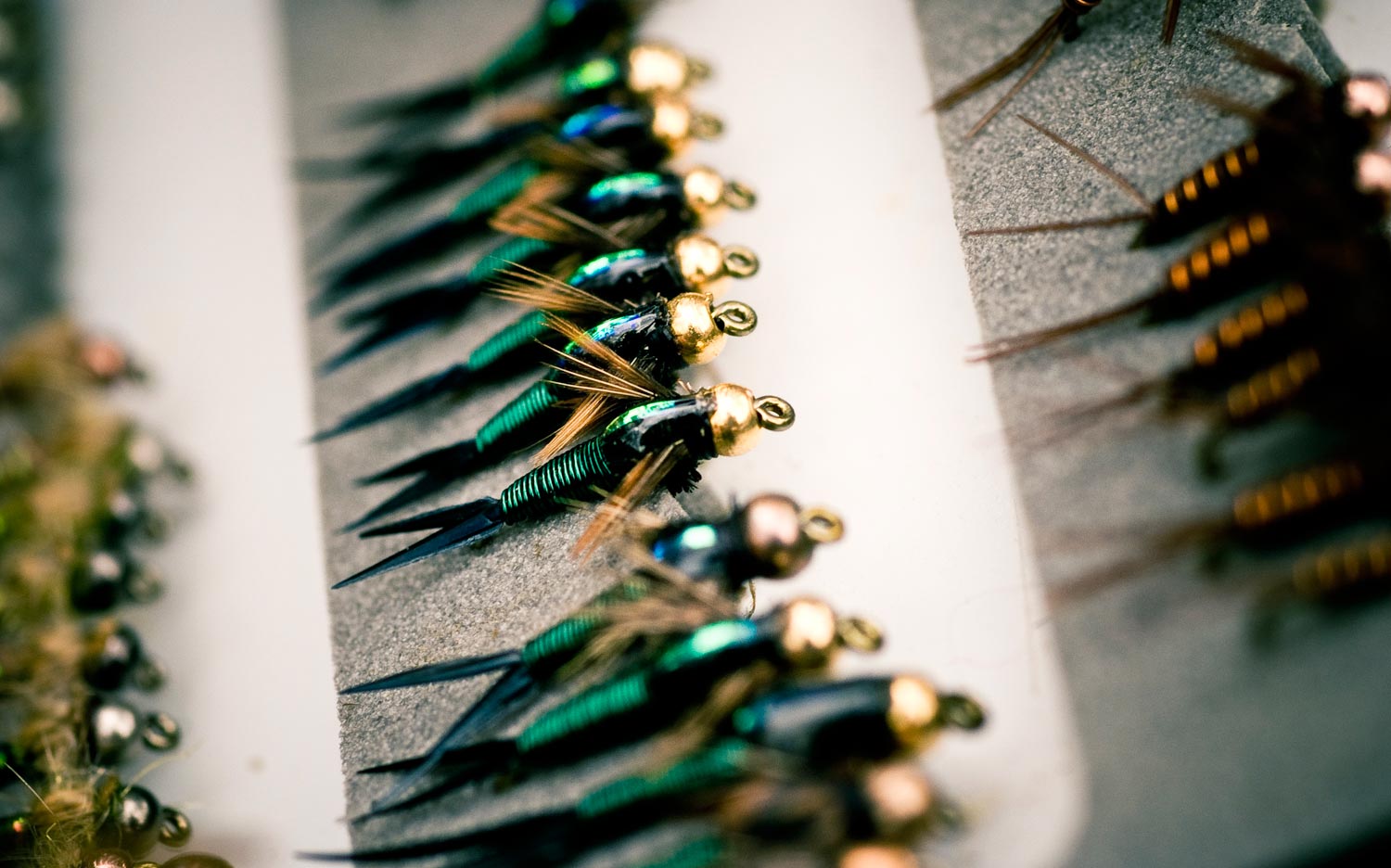
By Bob Reece
Many beginner and novice tiers that I’ve talked to equate improved efficiency at the vise with rushing through the tying process. While applying the techniques below can speed up pattern creation, that result is not their sole purpose. The main focus of these tips is to help tiers get the most out of whatever amount of time they do spend behind the vise.
Material Prep Work
Some patterns require very little in terms of prepping materials. Others, however, involve shaping foam bodies, knotting rubber legs, cutting wing cases or beading hooks. For these flies it is highly beneficial to prepare the materials in bulk before you start tying. When I tie foam terrestrials, I cut all of my foam bodies and the knot rubber legs that I might need. With bead head nymphs, I bead all hooks that I’ll be using as well as cutting any strips of material that I’ll be using for wing cases. If all of your materials are fully prepped before you start tying, you’ll be able to create a larger number of flies in a shorter amount of time. Prepping your materials in mass also increases the consistency and subsequent quality of the bugs that you’ll be offering up to your favorite fish.
Hook/Bead Storage
Hooks and beads can be two of the hardest materials to handle and keep track of on the surface of a tying table. Hooks of all sizes can easily be brushed under other materials or into the abyss of carpet fibers that sit below some of our tying platforms. Beads are also shifty and hard to handle once they leave the confines of their plastic packaging. To prevent these happenings, I store all of my beads and hooks in plastic compartmented organizers like the one in the picture above. The clip down lids of these containers ensure that nothing escapes. Each compartment also has a curved bottom which makes it easy to retrieve the desired items. The containers that I use can be purchased in the sewing section of Walmart for less than two dollars apiece.
Pattern Material Kits
How materials are stored matters in terms of efficiency. I use plastic organizers, like the one pictured above, to create material kits for all of the patterns that I tie. Always knowing where specific ingredients are saves a tier the time of searching though bins, drawers and baskets. This type of setup also
Read More »Situational Awareness and Flats Fishing
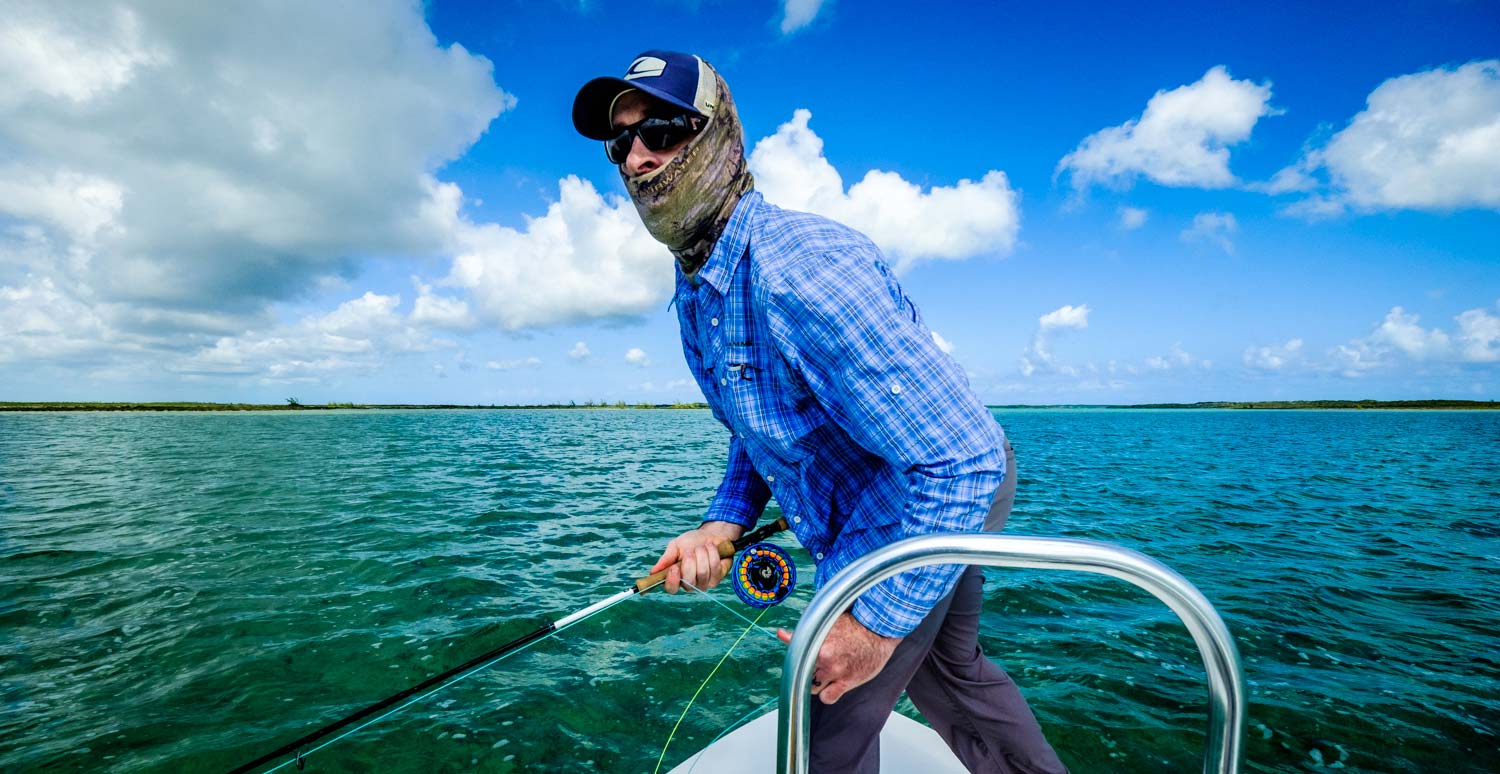
Fly-fishing saltwater flats requires many specialized skills, but none are as important as situational awareness.
Trout anglers revel in taking their time, analyzing the feeding patterns of fish and planning a successful presentation. That’s a luxury saltwater anglers can’t often afford. Things happen quickly on the flats, and it’s the prepared angler who catches fish. Flats fishing is hunting fish. Generally, the fish you are pursuing are hunting as well. They are constantly on the move and highly aware of changes in their environment. For every fish you see, there is a window of opportunity where you have a chance to make a good presentation. That window opens and closes quickly, and when it closes, it rarely opens again. An angler’s timing is often the single most important factor.
Standing on the bow of a skiff looks peaceful, and once you are comfortable with the process, it is. Below the surface, a good angler is keeping up with a laundry list of variables, planning, and calculating their best response to every possible scenario. Keeping up with current speed and direction, boat movement, water depth, lighting and the changing structure of the flat. When a fish appears, their may not be time to think about whether you should cast forehand or backhand, or how far you should lead the fish. You may need to react quickly and instinctively. It sounds more difficult than it is. With time it becomes second nature.
I spend a lot of time on the boat with anglers who are new to flats fishing. The thing I see kill opportunities more than anything else is a lack of situational awareness. While keeping up with light and water movement is somewhat advanced skill, it’s the simple things that are the most common problems. Simple stuff like line management often spoils shot after shot. A guide told me last week that he had a client who had a thirty foot shot at a school of permit. The client false casted wildly with no idea that his fly was hooked in the stripping mat. Nobody wants to be that guy.
Another simple error I see ruin a lot of good shots is anglers who never move their fly. It sounds crazy but it happens with startling regularity. A fish appears, the angler makes the cast and starts to strip, anxiously waiting for the tug that never comes, because the fly is sitting dead on the bottom because the boat is moving toward the fly faster than they are picking up line. Then when the guide calls for another cast, the pickup is loud and spooks the fish, because of all the slack.
Often it’s as simple as having your fly and leader in good shape when it’s time to make the presentation. An angler may stand on the bow for twenty minutes with wind knots in their leader or trash on their fly. It’s too late to check your setup after a fish refuses the fly or breaks the leader. These kind of simple mistakes can be heartbreaking on days when opportunities are limited. Fortunately, they are easy to avoid by simply paying attention.
Here are 10 things you should always be aware of when fly fishing saltwater.
Read More »